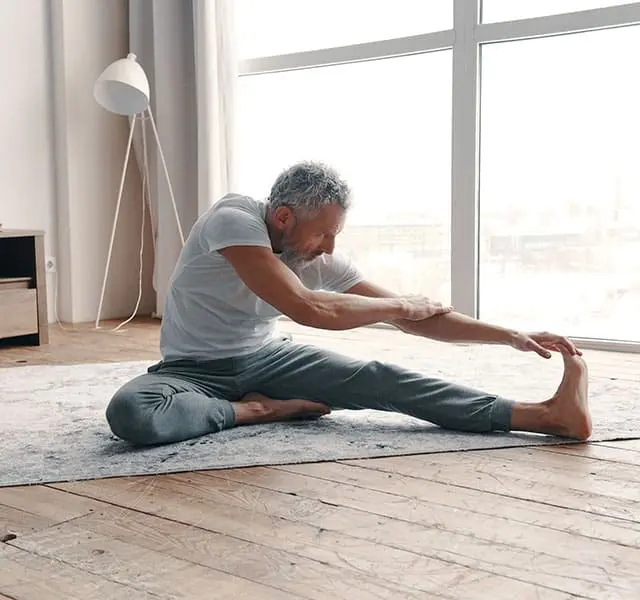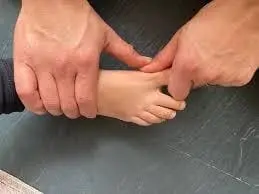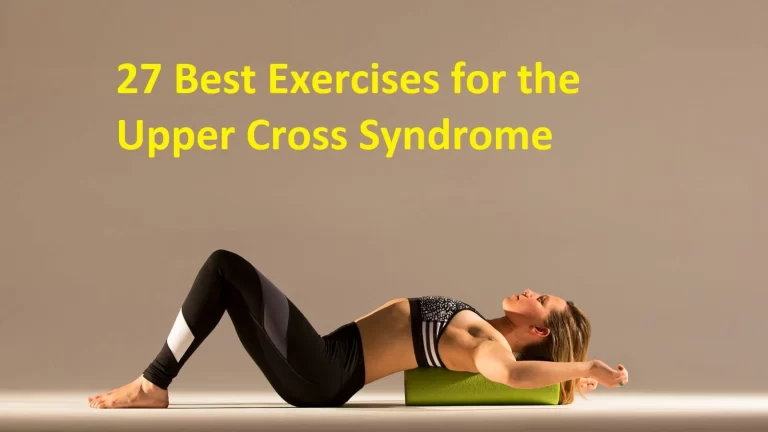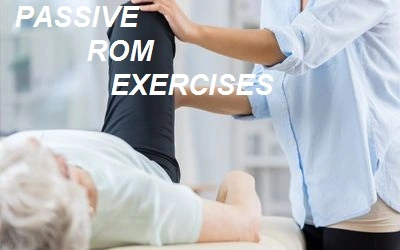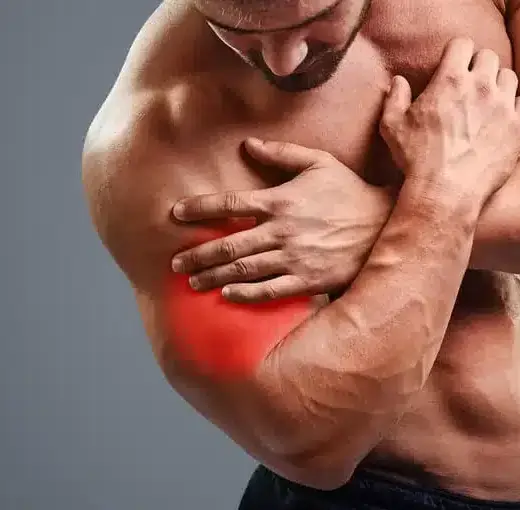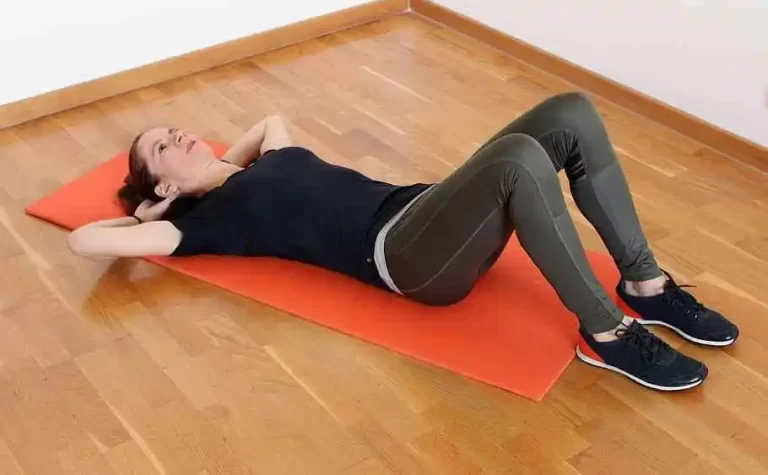14 Best Exercises For Gout
Gout is a type of arthritis that occurs mainly due to a buildup of uric acid crystals in the joints, often leading to sudden joint pain, swelling, and stiffness, mainly in the big toe.
While rest is crucial during flare-ups, gentle exercises like stretching, low-impact cardio, and joint mobility movements can help reduce stiffness, improve circulation, and prevent future attacks. Always consult a healthcare provider before starting any exercise routine during or after a gout flare.
Introduction:
Inflammatory arthritis includes gout. Uric crystal formation in the joints and surrounding tissues may be the cause of flares. Gout is often treated with exercise. However, it’s crucial to understand what gout is, when to exercise, and what kinds of exercises to do. Being active is essential for gout patients to maintain their health and prevent long-term joint damage.
Many patients have pain in the joints, redness, and swelling when they have gout, which frequently begins in the big toe. People with gout should exercise frequently in between flare-ups, even if the condition might make movement difficult during episodes.
Follow your doctor’s advice and pay attention to your body when gout flares up. Avoid exercises and rest when experiencing a gout episode. Exercises for gout at a low to moderate intensity can help lower inflammatory levels between flare-ups of gout.
Causes:
Family history and genetics
- Some individuals have kidneys that aren’t able to remove uric acid effectively, or they are more likely to produce excessive amounts of it.
Fasting or dehydration
- Crystal formation is more likely when the body has less water, which concentrates uric acid.
- Additionally, fasting may cause uric acid levels to rise.
Being overweight
- Increases the formation of uric acid.
- Connected to insulin resistance and metabolic syndrome.
A Purine-Rich Diet
- The digestion of purines produces uric acid.
- Foods heavy in purines, such as red meat (beef, lamb, and pork), can cause uric acid levels to rise.
Kidney Issues
- When uric acid cannot be properly eliminated by the kidneys, it develops.
- One important risk factor is chronic renal failure.
Signs and symptoms:
Intense, Sudden Joint Pain
However, it may also affect the,
- Ankles
- The knees
- Elbows
- Hands and wrists
Pain That Begins at Night
- The feeling of pain could get you up, and gout attacks usually start in the middle of the night or early hours of the morning.
The Inflammation and Swelling
- The affected joint looks red and swollen.
- The skin surrounding the joint is frequently heated, tight, and oily.
Tenderness
- Severe pain could be caused by even slight pressure or touch.
- During an acute attack, this tenderness is one of the most important indicators.
Regular Recurring Attacks
- If treatment is not received, attacks can happen more frequently and in more joints.
- It’s usually worse over time.
Continuing Concern Following an Attack
- Even after the worst pain goes away, joint pain may continue for a few days or weeks.
- If treatment is not received, attacks that follow could be more severe and impact more joints.
Restricted Joint Motion
- It could get harder to move the joint normally as the inflammation worsens.
Benefits of exercise:
People with gout can benefit greatly from exercise in terms of reducing flare-ups as well as improving joint health in general. However, during an episode, it’s essential to select what to do and prevent strain on irritated joints.
Encourages Improved Hydration
- Water is necessary for the removal of uric acid, and those who are active need to drink more of it.
- It is possible to prevent the development of uric acid crystals in joints by ensuring sufficient water intake.
Promotes Weight Loss and a Healthy Body Mass Index
- Physical activity helps in the reduction of body fat, especially visceral fat, which is linked to an increase in uric acid production.
- Gout attacks can be less frequent and less severe with even modest weight loss.
Strengthens Muscles and Joints
- Strength training keeps strong, toned muscles, which prevents joints from being damaged by gout.
- Low-impact workouts can keep joints mobile and avoid stiffness without triggering inflammation.
Reduces Levels of Uric Acid
- Frequent exercise may improve kidney function, facilitating the body’s more efficient removal of excess uric acid.
- Additionally, it may lower serum uric acid levels, particularly when paired with a nutritious diet and plenty of water.
Lowers Stress and Improves Mental Wellness
- Gout and other chronic pain conditions can cause stress, worry, and sadness.
- By reducing stress hormones, exercise indirectly lowers inflammation and improves mood by increasing the release of endorphins and serotonin.
Improves Cardiovascular Health
- Exercise promotes heart health, decreases blood pressure, and improves blood sugar regulation, all of which reduce the risk of comorbid conditions.
Improves Sleep Quality
- Frequent exercise helps people sleep deeper and more soundly, which may help control the hormones and metabolism that affect gout.
The following safety measures should be taken carefully before beginning an exercise program:
For your particular problem, a physician or physical therapist will choose the best workouts. Even before beginning any health program, consider a few safety measures to optimize the advantages.
If something seems off, you should pay attention to what your body is telling you and not push yourself. Extreme or chronic pain may be a sign of overwork, even if soreness is a typical side effect of exercise. Work your way up to more difficult workouts by beginning with low-impact ones to enhance your capacity to manage pain.
It is possible to avoid repetitive injuries by keeping good form and posture. Warming up your muscles and joints is a good idea before starting any exercise.
Exercises For Gout:
Walking
Walking is one type of regular, moderate-intensity activity that can help control weight, a risk factor for gout, lower uric acid levels, improve cardiovascular health, and reduce the frequency and severity of flare-ups.
- A low-impact workout that most people may incorporate into their everyday regimen is walking.
- When their level of fitness increases, people may decide to start with shorter walks and progressively increase the amount of time they spend walking.
- Overall fitness, joint mobility, and cardiovascular health can all be enhanced by walking.
 walking
walking
Swimming
For those with gout, swimming and other water-based activities are great ways to manage their illness in between flare-ups, when done carefully.
- Water resistance offers a mild method of strengthening the muscles around the joints while improving their range of motion and flexibility without placing excessive stress on them.
- A great low-impact workout is jogging or walking in water that is waist or chest-deep.
- It’s a fantastic strength and cardio training without putting too much strain on the joints because the water provides resistance.
 Swimming
Swimming
Cycling
As exercise is low-impact, cycling helps build leg muscles without overtaxing the joints.
- With stationary bicycles, you can easily change the resistance and track your progress in a controlled setting without any rough surfaces.
- This is frequently the safest course of action, particularly when beginning or following a flare-up.
- Wear comfortable, supportive cycling shoes or athletic shoes that provide good cushioning and don’t constrict your toes, especially if your big toe is affected.
- Start with low-intensity, short training sessions (ten to fifteen minutes).
- As your body adjusts and your fitness level increases, progressively increase the length and resistance.
 indoor-cycling
indoor-cycling
Ankle pumps
- Make sure your legs are comfortably extended when you lie down.
- Keep your affected foot relaxed and supported.
- Point your toes forward as if you were pushing a gas pedal.
- Hold this position for a few seconds.
- Pull your toes back toward your shin.
- Then return to your neutral position.
- Then relax.
- Repeat these exercises 5 to 10 times.
 ankle pumps
ankle pumps
Ankle circles
- Once you’re lying down, ensure your legs can be extended out comfortably.
- Keep your knee relaxed but straight.
- To begin, turn your foot slowly in little circles in one direction.
- Try turning your foot at the ankle joint rather than just the toes.
- As you gradually expand the circles, be sure to reach the ankle’s complete range of motion.
- After a few seconds of continuous circle-making in one direction, change directions.
- Then return to your neutral position.
- Then relax.
- Repeat these exercises 5 to 10 times.
 ankle-circle
ankle-circle
Toe curls
- Take a seat on the chair first.
- Next, spread the towel out.
- Keep your heel down and flex your foot back while raising your toes.
- Step out as far as you can after evenly extending your foot over the center and both sides of the towel while maintaining your heel on its surface.
- In your direction, push the towel.
- Just beneath the arch, draw a broad circle with all five fingertips.
- With every extension, you will only be able to move a specific portion of the towel.
- Then return to your neutral position.
- Then relax.
- Repeat these exercises 5 to 10 times.
 Toe-curls
Toe-curls
Bridging
- Place yourself in a comfortable position on your back.
- Using a yoga mat or other soft surface for this practice can be helpful.
- Make sure your knees stay bent.
- On the floor, keep your feet flat.
- Then raise yourself off the ground by raising yourself from your hips.
- Hold this position for a few seconds.
- Then return to your neutral position.
- Then relax.
- Repeat these exercises 5 to 10 times.
 Hip bridge exercise
Hip bridge exercise
Clamshell
Clamshell steps are:
- To start, you lie on your side.
- Next, use your left hand to elevate your head.
- Afterwards, you should bend your knees to a 45-degree angle.
- You can keep your balance by placing your right hand on the ground in front of you.
- Maintain your feet near the ground.
- Next, carefully raise your right knee towards the ceiling.
- Hold this position for a few seconds.
- Then return to your neutral position.
- Then relax.
- Repeat these exercises 5 to 10 times.
 Clamshells
Clamshells
Knee extension
- Start by settling into the chair’s seated position.
- Maintaining a flexed foot, gradually extend one leg in front of you while contracting your quads.
- Keep your knee as straight as possible.
- Hold this position for a few seconds.
- Don’t let the leg drop occur too quickly.
- Instead, keep it controlled and gradual so you can get the most achievable of it.
- Then return to your neutral position.
- Then relax.
- Repeat these exercises 5 to 10 times.
 knee-extension
knee-extension
Step-ups
- Stand up straight.
- After that, position a lower platform or step box in front of you.
- Step onto the step with one foot.
- You can elevate your body by straightening your hips and knees by applying pressure to your heel.
- Instead of utilizing force, control your muscles.
- Hold this position for a few seconds.
- Lower yourself back down slowly.
- Then return to your neutral position.
- Then relax.
- Repeat these exercises 5 to 10 times.
 step-ups
step-ups
Sit to stand
- Select a seat near the front edge of an armrest-free, stable chair.
- Your hands should be on the seat’s sides.
- You should have a slightly forward-facing chest.
- Take a slow breath.
- Exhale as you slowly stand up.
- Make every effort to refrain from using your hands to support any weight.
- Take time to stand and inhale deeply as you progressively feel more at ease.
- Strengthen your stomach and core muscles to regulate your lowering as much as possible.
- Slowly lowering oneself back to the chair is preferable to just lowering back into the seat.
- Breathe out slowly.
- Then return to your neutral position.
- Then relax.
- Repeat these exercises 5 to 10 times.
 Sit-to-stand
Sit-to-stand
Heel raise
- You can sit at the table or place your feet on the floor in front of you.
- Lift your heels off the floor slowly.
- At the highest point of the action, contract your calves and place your weight on the heel of your feet.
- Hold this position for a few seconds.
- Then drop your heels down gradually.
- Then return to your neutral position.
- Then relax.
- Repeat these exercises 5 to 10 times.
 Seated Foot & Heel Raise
Seated Foot & Heel Raise
Big toe stretch
- Sit upright on the table or chair to begin.
- Use one hand to grasp your big toe, or two hands if you’re sitting and bending your knee slightly.
- Breathe slowly and focus on allowing your foot to relax while you hold the stretch for a few seconds.
- You should feel some stretch in your big toe, the arch of your foot, and possibly the muscles in your ankle and calf.
- Then return to your neutral position.
- Then relax.
- Repeat these exercises 5 to 10 times.
 Big toe stretch
Big toe stretch
Toe splay
- Step onto the ground and assume a standing stance.
- After that, separate your toes as widely as feels comfortable.
- Hold this position for a few seconds.
- Then return to your neutral position.
- Then relax.
- Repeat these exercises 5 to 10 times.
 Toe-splay
Toe-splay
What safety measures should be carried out when exercising?
Safety is essential when exercising with gout to guard against joint damage, prevent flare-ups, and maintain long-term joint health.
Speak with your physician or physiotherapist.
- Before beginning an exercise program, get permission.
- Ask about specially designed, joint-safe exercises, especially if you suffer from diabetes or obesity.
Effectively Warm Up and Cool Down
- Always begin with five to ten minutes of gentle exercise, such as arm circles or comfortable walking.
- Finish with cool-down exercises or light stretching.
Begin by Engaging in Low-Impact Activities
Choose gentle workouts that won’t put excessive pressure on your joints, such as:
- Walking
- Swimming
- Yoga
- Tai chi
Do Not Work Out While Flare-Up
- During an inflammatory episode, avoid exercising with the affected joint.
- Use ice, give the joint some rest, and follow your doctor’s treatment instructions until your symptoms lessen.
- Exercise or mild stretching in the unaffected areas might still be safe.
Stay away from activities that strain your joints excessively.
- Don’t run, jump, or lift large weights, especially if your joints are inflamed or painful.
- Adjust workouts to lessen joint strain.
Pay Attention to Your Body
Stop right away if you experience:
- Unexpected or intense pain
- Swelling
- Breathlessness or lightheadedness
Engage in Moderate but Regular Exercise
- Keep your breaks between sessions short and avoid unexpected rises in intensity.
Put on supportive footwear.
- Wear warm, arch-supporting, and cushioned shoes.
- Avoid sandals that aren’t supportive or high heels.
When did you quit working out?
Knowing the warning signs that your body is not responding well to exercise can help you avoid worsening your injury.
You Experience Sudden or Acute Pain
- This may indicate overworking.
- Put on ice, stop right away, and rest.
- Consult a physician if the pain remains.
Lack of breath or dizziness
- You should immediately stop exercising if you experience lightheadedness, dizziness, or difficulty breathing.
Tingling or numbness increases
- If your burning, tingling, or numbness worsens, stop immediately.
- These symptoms could be a sign of nerve inflammation or stress.
Inability to Balance or Coordinate
- If standing or walking becomes difficult for you, or if you feel unstable or uncertain, stop to prevent falls.
- Use support equipment or sit, or swim to exercise if needed.
It hurts for hours after working out.
- After an activity, if you experience prolonged pain, your body is not capable of handling the current load or type of exercise.
- Take it easy until the level of pain decreases.
What kinds of exercises should you avoid if you have gout?
If you have gout, stay away from high-intensity activities as they might increase your uric acid levels.
Among the examples are:
Burpees
- You must push yourself up and leap into the air to perform burpees.
- Since it uses every muscle in the body, the joints may be overworked.
Lunge jumps
- To engage in this type of exercise, you must leap high into the air and change to your second foot before landing.
Jumping jacks
- This is another full-body workout that puts a lot of strain on the lower body.
- Walking, even if it doesn’t require any equipment, is a far better option.
Jumping ropes
- Skipping is another name for this.
- It is easy and wonderful for the average person to get done, but it is not good for gout sufferers’ joints.
Lifestyle modifications to prevent and manage gout:
Lifestyle changes that focus on exercise and achieving and maintaining a healthy weight can help people with gout manage and avoid the condition.
People with gout can maintain control of their condition by following their doctor’s recommended course of therapy.
Observe the course of treatment as suggested by your physician.
- Be sure to keep to your doctor’s treatment plan and show up for your appointments regularly.
- Lifestyle changes by themselves are unlikely to lower uric acid levels in gout patients to a level where flare-ups are prevented.
- Usually, the sole option is medicine to prevent attacks by reducing uric acid levels significantly.
Reduce your weight.
- You may have a lower likelihood of experiencing a gout attack and lower uric acid levels if you are overweight or obese.
Engage in regular exercise.
- Gout-related pain and problems can be lessened by exercise.
- Additionally, exercise helps lower your chances of obesity and other diseases that increase your risk of developing gout.
- A minimum of 90 to 120 minutes of moderate exercise a week is recommended for adults.
Select activities that have a low effect.
- Gout symptoms may develop as a result of joint injury.
- Walking, swimming, and biking are examples of low-impact, moderate-intensity exercises that are easier on the joints.
- Due to the fact that they do not twist or overstress the joints, these exercises have minimal risk for injury.
Summary:
One kind of arthritis is gout. It happens when the body stores high levels of serum urate, which causes uric acid crystals to form in joints (lower limbs or large toes). Inflammation of the joints and arthritis may also result from the body producing too much urate or removing too little of it. Periodically, gout flare-ups might continue for a week or two and are characterized by joint pain and edema.
Frequent exercise may improve mood and general health while lowering inflammation and preventing gout flare-ups. To prevent worsening pain and hasten healing, people with gout should avoid exercising during flare-ups.
It can be quite difficult to live with gout, particularly when you have an episode. For this reason, people with this type of inflammatory arthritis must take all necessary steps to reduce their symptoms. This is where certain workout regimens could be beneficial.
Gout can be managed with low-impact workouts, weight control, and enough water. Frequent exercise can lower the chance of gout flare-ups and improve both physical and mental health.
When increasing physical activity levels, a person with gout may benefit from starting slowly, wearing suitable footwear, and taking regular breaks, especially during flare-ups.
FAQ:
Can someone with gout exercise?
When you have gout, you can exercise, but only when you’re not having flare-ups. Exercise improves joint health, lowers uric acid levels, and helps manage weight, all of which are good for gout.
Which workouts work best for gout patients?
Exercises with low impact are best, particularly when recovery is underway:
Walking
Swimming
Cycling
Yoga or stretching
Ankle circle
Toe curl
Toe splay
When my gout flares up, should I stay away from exercise?
Yes. To stop pain and inflammation from getting worse during an acute flare, give the affected joint some rest. After the symptoms are gone, resume light activities.
How can gout be managed with exercise?
Helps people lose weight and relieve joint pressure. Increases insulin sensitivity, which can reduce uric acid levels. Increasing circulation may help in the body’s clearance of uric acid.
Is yoga beneficial for gout?
Yes. Yoga reduces stress, improves flexibility, and encourages gentle joint movement, all of which can help reduce inflammation.
Can people with gout safely lift weights?
Yes, but exercise caution when doing so:
Employ light to moderate weights.
Avoid overstressing your affected joints.
If you can, work with a physical therapist or trainer.
What safety measures should I take if I have gout and want to exercise?
If you’re new to exercising or treating chronic gout, speak with your doctor.
Make use of suitable footwear and joint support.
Which foods are good or safe for gout?
Foods to consider:
Low-fat dairy products
Whole grain
Veggies, particularly leafy greens
Berries and cherries.
Drink plenty of water to keep hydrated.
Is it possible to avoid gout attacks?
Indeed. The risk can be decreased by:
Maintaining Hydration
Staying away from meals high in purines
Keeping a healthy weight
Reducing alcohol consumption
Regularly taking prescribed medications
Is gout inherited?
Indeed, there is a family history of gout. You should start taking precautions early if there is a family history because you are more at risk.
For whom is gout most likely to happen?
Gout is more prevalent in:
Men (particularly those over 40)
The postmenopausal female Individuals who suffer from kidney disease, diabetes, or high blood pressure
People who consume a lot of alcohol
Is gout a result of stress?
Stress can worsen or provoke gout, even if it is not the direct cause of the condition. Stress-related increases in uric acid levels may lead to flare-ups of gout.
How quickly does gout spread?
Gout attacks could increase in frequency and spread to new joints if treatment is not received.
References:
- Things to know about fitness and gout in 2022 – MPT
- Knapp’s 2024 List of the Greatest and Worst Gout Exercises
- Ames, H. July 17, 2023. Tips for Working Out When Suffering from Gout. Gout and Physical Exercise: An Article https://www.medicalnewstoday.com/articles
- On June 2, 2023, Restivo, J. How to manage gout. Harvard Health. https://www.health.harvard.edu/diseases-and-conditions/gout-related living
- Physio, S. (n.d.). Surrey Physio: The Top 5 Ways to Treat Gout. @surreyphysio.co.uk/top-5/best-5-ways-to-fix-gout/ Surrey Physio
- April 1, 2024; Dpt, K. G. P. Physical goals can be achieved with gout-friendly exercises. Excellent Health. VerywellHealth.com/gout-physical-exercise-8606642
- Pumps for ankles. n.d. [Visual]. https://en-gb.hingehealth.com/resources/articles/gout-physical-exercise/ Hingehealth
- Pumps for ankles. n.d. [Visual]. https://en-gb.hingehealth.com/resources/articles/gout-physical-exercise/ Hingehealth
- 12, 2021; Stanton, C. Gout and walking: Strategies for maintaining an active lifestyle following a flare-up. https://creakyjoints.org/about-arthritis/gout/gout-diet/walk-exercise-with-gout and so on

